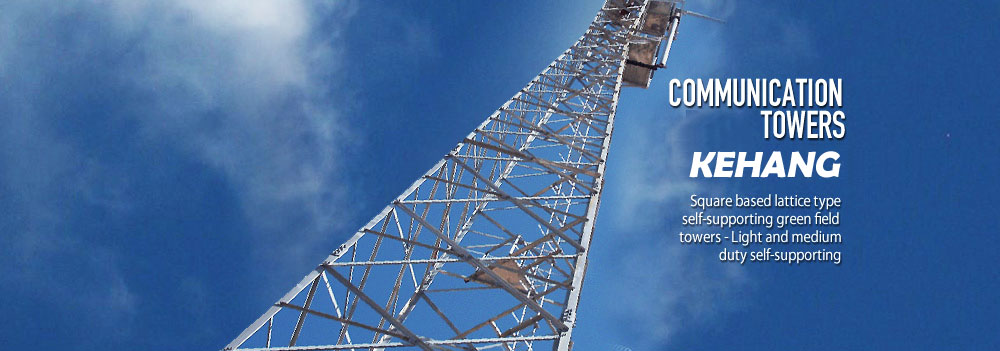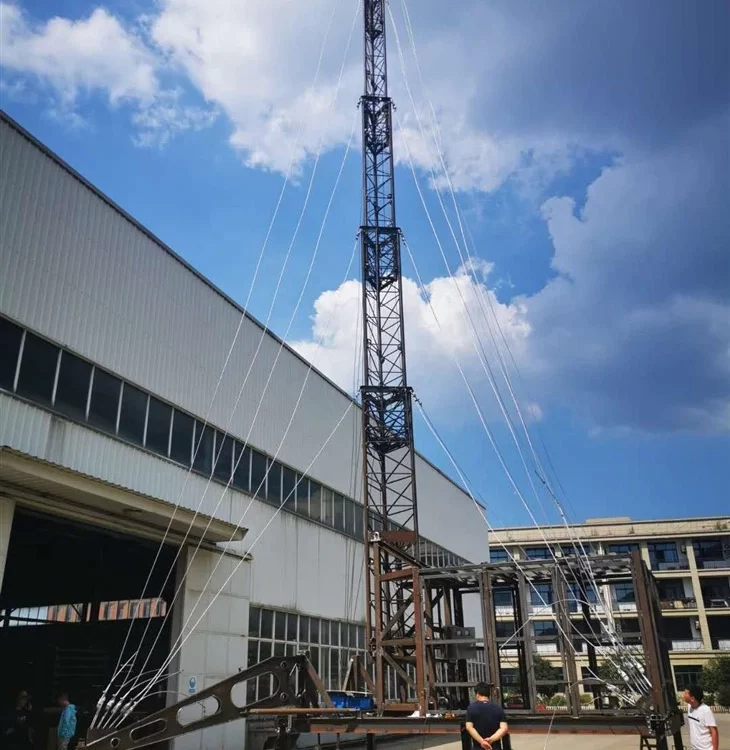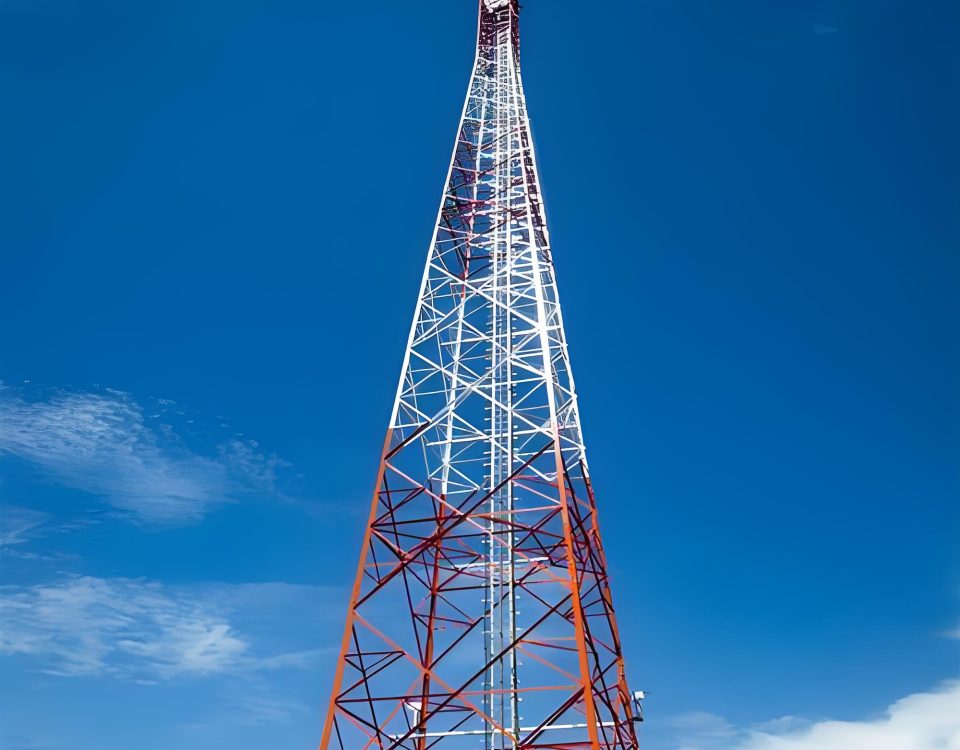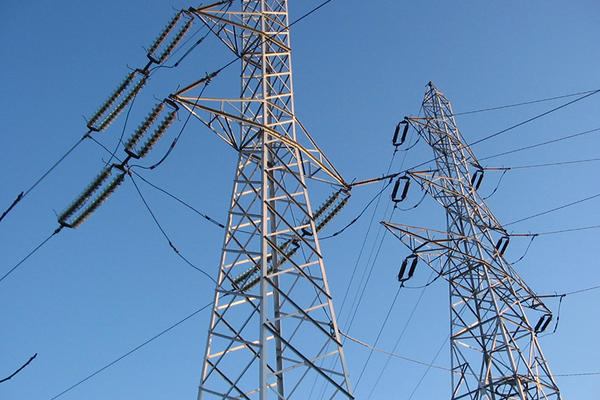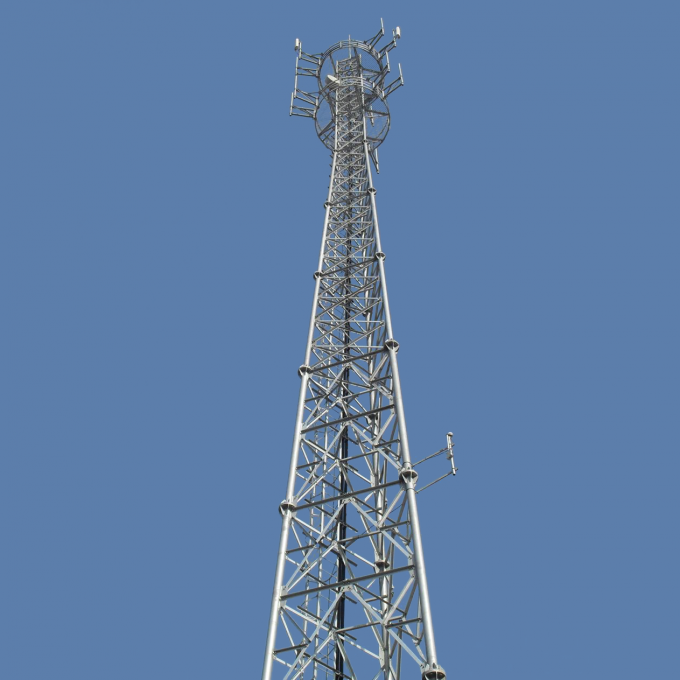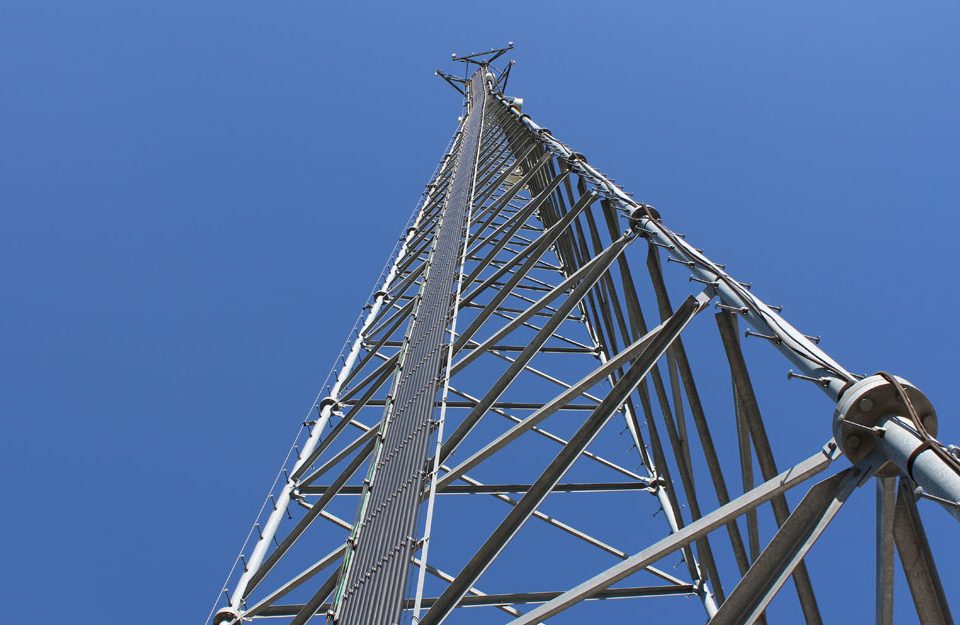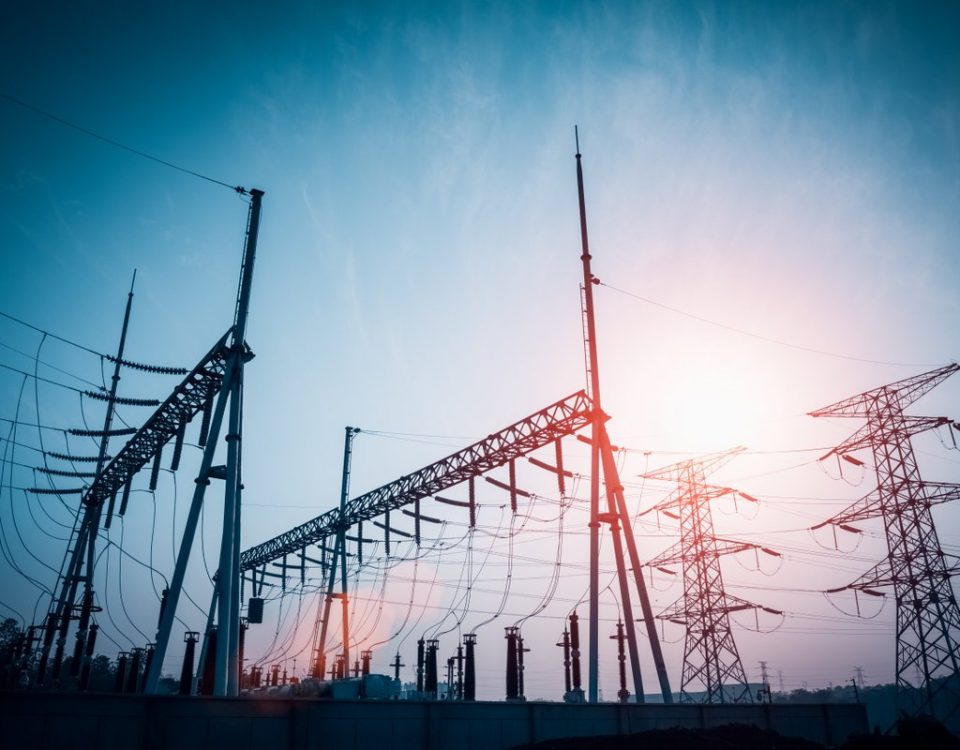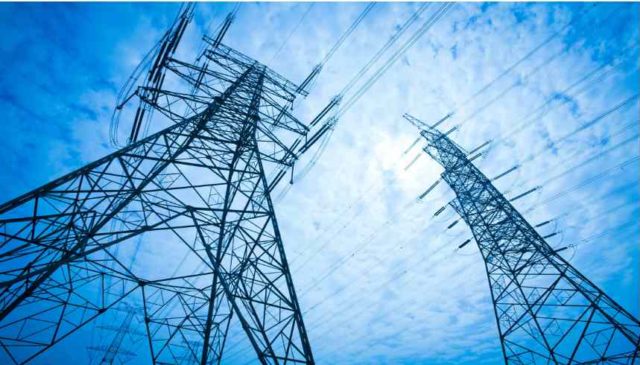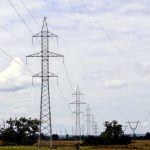
What are double circuit transmission lines
July 2, 2024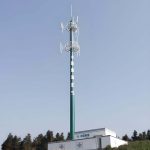
GSM Communication Monopole Tower
July 12, 2024Difference Between Self-Supporting and Guyed Towers
Difference Between Self-Supporting and Guyed Towers
Towers are critical structures used for a variety of applications, including telecommunications, broadcasting, and wind energy. Two common types of towers are self-supporting towers and guyed towers. Understanding their differences requires an in-depth examination of their structural design, material use, load distribution, cost implications, and specific applications. This detailed analysis will elucidate the fundamental and nuanced distinctions between these two types of towers.
Structural Design
Self-Supporting Towers
Self-supporting towers, also known as free-standing towers, are designed to stand on their own without external support. They are typically constructed using a lattice framework, which creates a stable structure through the interconnection of multiple steel or aluminum components. These towers can be square, triangular, or polygonal in cross-section.
- Lattice Structure:
- The lattice design distributes loads across numerous members, enhancing the tower’s ability to withstand various forces such as wind, seismic activity, and the weight of attached equipment.
- The interconnected members form triangles, providing rigidity and minimizing deformation under load.
- Base and Foundation:
- Self-supporting towers require a robust foundation to handle the significant weight and moment forces at the base. Foundations are typically deep and involve substantial concrete and steel reinforcements.
- The foundation design must account for soil conditions and environmental factors to ensure stability and longevity.
- Materials:
- High-strength steel or aluminum is commonly used for the lattice members. The choice of material depends on factors such as weight, cost, and environmental conditions (e.g., corrosion resistance in coastal areas).
Guyed Towers
Guyed towers are slender structures that rely on guy wires (tensioned cables) anchored to the ground to maintain stability. These towers can be much taller than self-supporting towers while using less material for the main structure.
- Central Mast:
- The central mast of a guyed tower is typically a single vertical structure, which can be a simple pole or a light lattice framework.
- The mast alone cannot withstand significant lateral forces without the support of guy wires.
- Guy Wires:
- Guy wires are tensioned cables made of high-strength steel, usually galvanized to resist corrosion. These wires are anchored to the ground at multiple points in a radial pattern.
- The tension in the guy wires counteracts lateral forces, distributing them to the ground and reducing the load on the central mast.
- Anchors and Foundations:
- The anchors for the guy wires must be robust and deeply embedded to handle the tension forces. These anchors can be concrete blocks, screw anchors, or driven piles, depending on soil conditions.
- The central mast requires a smaller foundation compared to self-supporting towers, as much of the load is transferred through the guy wires.
Load Distribution
Self-Supporting Towers
- Load Bearing: The entire structure bears the loads directly, with the lattice framework distributing forces evenly across the interconnected members.
- Wind Loads: These towers are designed to resist wind loads through their inherent rigidity and structural integrity. The lattice design minimizes wind resistance by allowing air to pass through the structure.
- Seismic Loads: Self-supporting towers are generally more resistant to seismic forces due to their stable base and distributed load-bearing capabilities.
Guyed Towers
- Load Bearing: The central mast mainly supports vertical loads (weight of the tower and attached equipment), while the guy wires handle lateral forces (wind, seismic activity).
- Wind Loads: Guy wires significantly reduce the wind load on the central mast by transferring forces to the ground anchors. The slender design of the mast itself also minimizes wind resistance.
- Seismic Loads: Guyed towers can be more flexible, allowing them to dissipate seismic energy better. However, the stability of the guy wires and anchors during seismic events must be carefully considered.
Cost Implications
Self-Supporting Towers
- Material Costs: Higher due to the extensive use of steel or aluminum in the lattice framework.
- Construction Costs: More expensive because of the need for a robust foundation and the complexity of assembling the lattice structure.
- Maintenance Costs: Generally lower as there are fewer components (no guy wires) that require regular inspection and tension adjustments.
Guyed Towers
- Material Costs: Lower due to the minimal material required for the central mast.
- Construction Costs: Less expensive because of the simpler mast design and smaller foundation requirements. However, the cost of guy wires and anchors must be considered.
- Maintenance Costs: Higher due to the need for regular inspection and maintenance of guy wires and anchors to ensure proper tension and integrity.
Applications
Self-Supporting Towers
- Telecommunications: Ideal for urban areas where space is limited and aesthetic considerations are important. They can support heavy loads, such as multiple antennas and microwave dishes.
- Broadcasting: Used for television and radio broadcasting where high structural stability is required.
- Wind Energy: Suitable for wind turbines, particularly in locations where land availability is limited, and high structural integrity is necessary.
Guyed Towers
- Telecommunications: Commonly used in rural and remote areas where space is abundant. They can achieve great heights with minimal material.
- Meteorological Stations: Ideal for supporting weather monitoring equipment at high altitudes.
- Radio Broadcasting: Often used for AM radio transmission due to their ability to support tall structures with minimal material costs.
Parameter Comparison
| Parameter | Self-Supporting Towers | Guyed Towers |
|---|---|---|
| Height | Up to 150 meters (500 feet) or more | Can exceed 600 meters (2000 feet) |
| Load Capacity | High, can support heavy equipment and multiple antennas | Moderate, mainly supports lightweight antennas and similar equipment |
| Material Use | Extensive use of high-strength steel or aluminum | Minimal use of steel for mast; extensive use of steel for guy wires |
| Construction Time | Longer, due to complex lattice assembly and robust foundation | Shorter, due to simpler mast construction and lighter foundation |
| Cost | Higher initial cost due to material and construction complexity | Lower initial cost, but higher maintenance costs for guy wires |
| Maintenance | Lower, fewer components to inspect and maintain | Higher, frequent tensioning and inspection of guy wires required |
| Site Requirements | Requires less ground area, suitable for urban environments | Requires large ground area for guy wire anchors, suitable for rural areas |
| Wind Resistance | High, due to rigid lattice structure | Moderate, relies on guy wires to distribute wind loads |
| Seismic Resistance | High, due to distributed load-bearing capability | Moderate, flexibility of guy wires helps but relies on anchor stability |
Design Plan
Self-Supporting Tower Design Plan
- Site Selection and Survey:
- Conduct a geotechnical survey to assess soil conditions.
- Determine the environmental factors such as wind speeds, seismic activity, and corrosion potential.
- Choose a site with appropriate access for construction equipment.
- Structural Design:
- Select the appropriate lattice configuration (triangular, square, or polygonal).
- Perform load calculations to determine the size and strength of the structural members.
- Design the foundation to support the vertical and lateral loads. This may involve deep footing or pile foundations, depending on soil conditions.
- Material Selection:
- Choose high-strength steel, typically hot-dip galvanized for corrosion resistance.
- For corrosive environments, consider aluminum or composite materials.
- Detailed Engineering:
- Create detailed engineering drawings and specifications.
- Include all structural members, connections, and foundation details.
- Perform structural analysis using software tools to ensure stability and safety.
- Construction Planning:
- Develop a detailed construction plan, including timelines, resource allocation, and safety measures.
- Plan for the transportation and handling of large steel components.
- Erection:
- Prepare the site and construct the foundation.
- Assemble the lattice structure in sections, typically using cranes.
- Bolt or weld the sections together, ensuring precise alignment and secure connections.
- Final Inspection and Testing:
- Conduct a thorough inspection of the completed tower.
- Test for structural integrity, alignment, and load-bearing capacity.
- Perform any necessary adjustments or reinforcements.
Guyed Tower Design Plan
- Site Selection and Survey:
- Conduct a geotechnical survey to assess soil conditions and determine the appropriate type of anchors.
- Evaluate environmental factors such as wind speeds, seismic activity, and potential for corrosion.
- Ensure the site has ample space for guy wire anchors, typically requiring a large, clear area.
- Structural Design:
- Design the central mast, which can be a solid pole or a light lattice structure.
- Calculate the loads and determine the appropriate height and diameter of the mast.
- Design the guy wire configuration, including the number, placement, and tension of the wires.
- Material Selection:
- Use high-tensile steel for the mast and guy wires, ensuring they are galvanized for corrosion resistance.
- Select appropriate materials for the anchors based on soil conditions (concrete, screw anchors, driven piles).
- Detailed Engineering:
- Develop detailed engineering drawings and specifications for the mast, guy wires, and anchors.
- Perform structural analysis to ensure stability, particularly under wind and seismic loads.
- Construction Planning:
- Create a detailed construction plan, including timelines, resource allocation, and safety protocols.
- Plan for the installation of anchors and the tensioning of guy wires.
- Erection:
- Prepare the site and install the anchors according to the design specifications.
- Assemble the central mast, which can often be done on the ground and then lifted into place.
- Attach and tension the guy wires carefully, ensuring they are evenly distributed and properly secured.
- Final Inspection and Testing:
- Inspect the completed structure, focusing on the tension and integrity of the guy wires.
- Test for stability under various load conditions.
- Perform regular inspections and maintenance to ensure the guy wires remain properly tensioned and the anchors secure.
Conclusion
The choice between self-supporting and guyed towers involves a detailed comparison of various parameters and a well-planned design approach. Self-supporting towers are ideal for urban environments and applications requiring high load capacity and stability, while guyed towers offer a cost-effective solution for achieving great heights in rural areas with ample space.
By following a structured design plan, engineers can ensure the safe and efficient construction of either type of tower, tailored to the specific needs and conditions of the project. This comprehensive approach ensures that all factors are considered, from site selection and structural design to material choice, construction, and maintenance.

